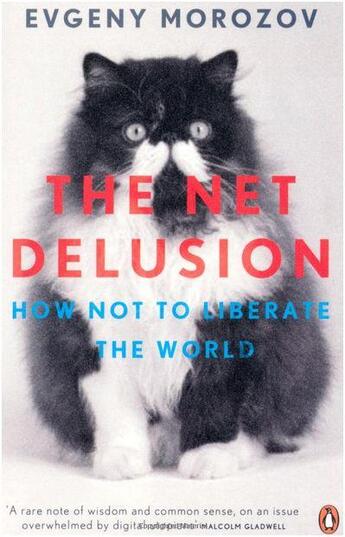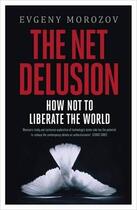-
Date de parution : 05/04/2012
-
Editeur :
Penguin Uk
-
EAN : 9780141049571
-
Série :
(-)
-
Support :
Papier
Résumé:
In The Net Delusion: How Not to Liberate the World Evgeny Morozov argues that our utopian, internet-centric thinking holds devastating consequences for the future of democracy. We were promised that the internet would set us free. From the Middle East's 'twitter revolution' to Facebook... Voir plus
In The Net Delusion: How Not to Liberate the World Evgeny Morozov argues that our utopian, internet-centric thinking holds devastating consequences for the future of democracy. We were promised that the internet would set us free. From the Middle East's 'twitter revolution' to Facebook activism, technology would spread democracy and bring us together as never before. We couldn't have been more wrong. In The Net Delusion Evgeny Morozov shows why internet freedom is an illusion. Not only that - in many cases the net is actually helping oppressive regimes to stifle dissent, track dissidents and keep people pacified, with companies such as Google and Amazon helping them do it. This book shows that free information doesn't mean free people - and that, right now, everyone's liberty is at stake. 'Offers a rare note of wisdom and common sense, on an issue overwhelmed by digital utopians' ;;Malcolm Gladwell 'Passionate, admirable and important' ;; Observer 'The book is a wake-up call to those who think the internet is the solution to all our problems' ;; Daily Telegraph 'A delight ... his demolition job on the embarrassments of "internet freedom" is comprehensive' ;; Independent 'A compelling rebuff ... required reading for everyone' ;; Sunday Times 'Piercing ... convincing ... timely' ;; Financial Times Evgeny Morozov is a contributing editor to Foreign Policy and runs the magazine's influential and widely-quoted 'Net Effect' blog about the Internet's impact on global politics. Morozov is currently a Yahoo! fellow at the Institute for the Study of Diplomacy at Georgetown University.
Donner votre avis









